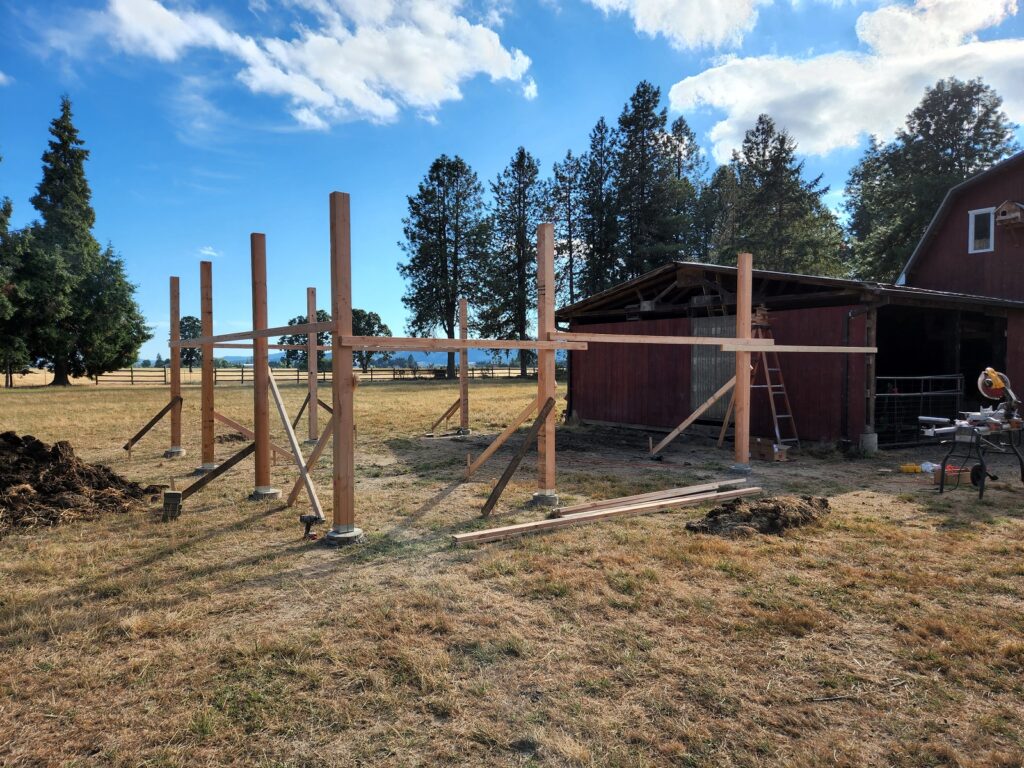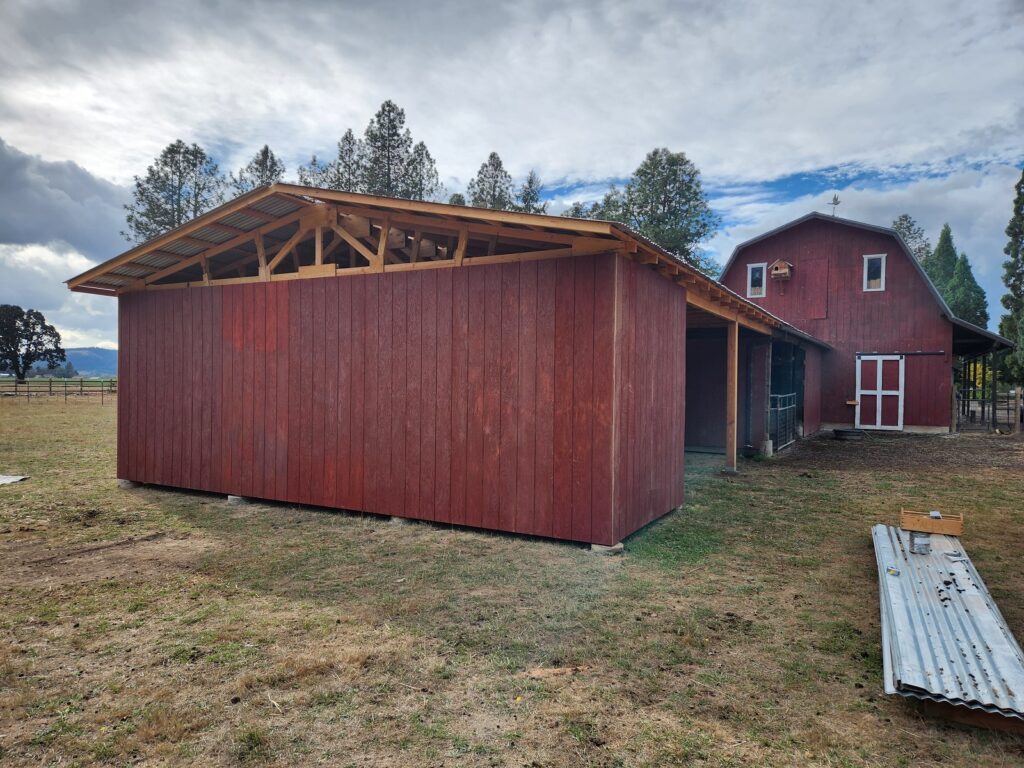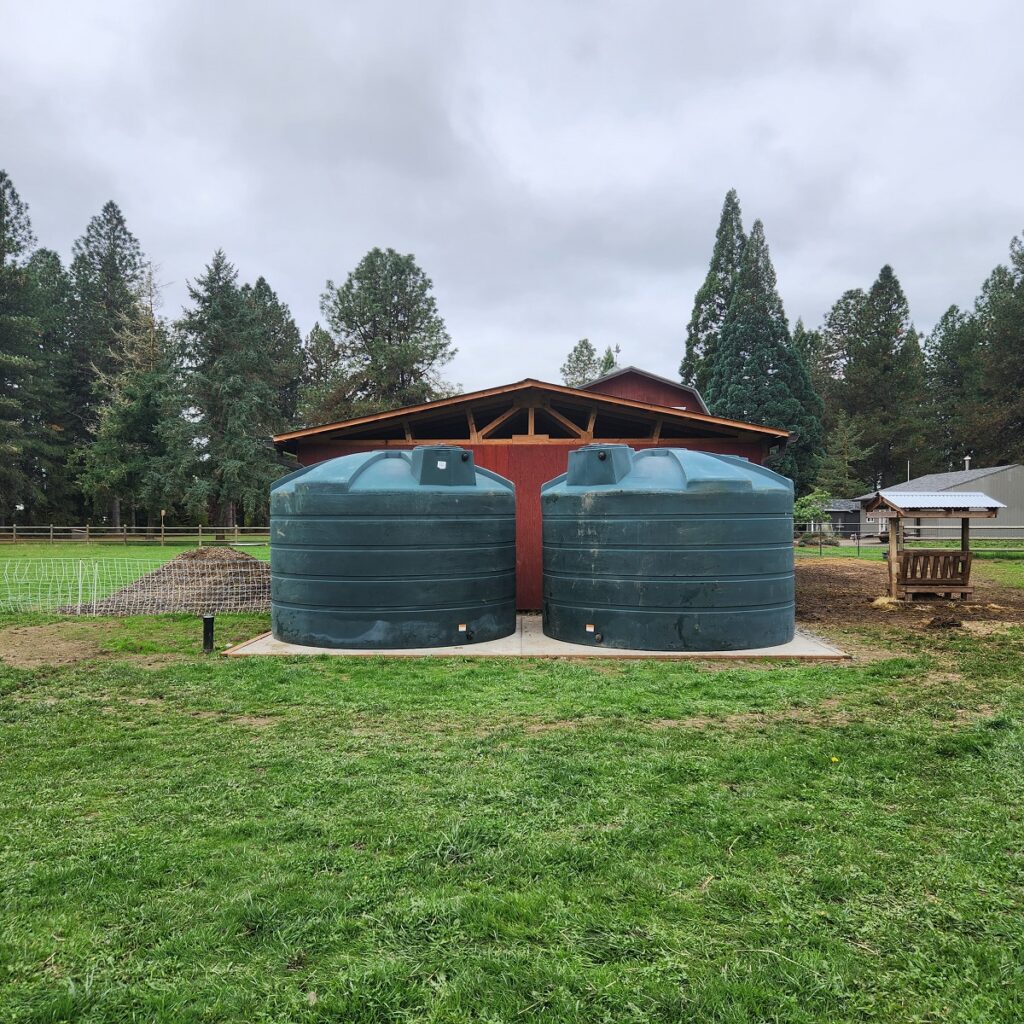Fencing
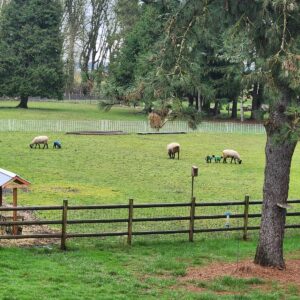
It’s hard to raise animals when you don’t have a perimeter fence to keep them in – and predators out. It was the middle of winter by the time we got to fencing, and not the ideal time to be putting up a fence. But we planned to get our first flock of sheep, some goats and a horse that spring, so despite the rain and muddy terrain, we set out to get our fence built.
Our first step was the design. You wouldn’t think that an essentially rectangular fence would take much to figure out, but we had property lines to confirm, large trees to avoid, gate placement, and integration with our barn. Plus we wanted it to be aesthetically pleasing. Putting in fence posts is just hard work, and stretching the fencing takes some practice. We have since installed additional cross fencing and repaired multiple stretches from tree damage. There is not really a lot more to say about fences. But did I mention it is really hard work?
The Barn
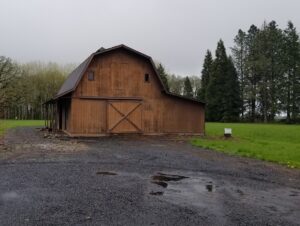
The Barn is the anchor building of our farm. When we first moved in, it was not looking to great, but the structure was sound, so one of our first projects was to restore it. The image to the right shows the barn in it’s original state. The image to the left is more recent.
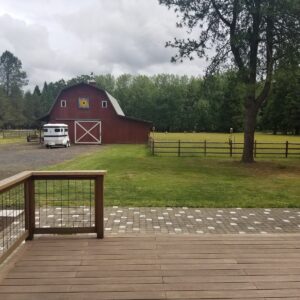
After moving several drop boxes of debris out of the barn, Lynn set out to work on the exterior. Lynn spent most of that summer sanding off the old paint and preparing it for new stain. Hearing about our barn project, my mother recalled how many of her relatives from Sweden had these beautiful red barns. It turns out that the Swedish red that she remembered is the original Falun Red (Falu Rödfärg) color, which has been used for centuries. The Falun Red color has its origin in the city of Falun, which in is a mining area of Sweden. The red pigment comes from iron oxide, which was prevalent in the mines. The heavy stain also contains copper compounds and zinc, which at as natural wood preservatives.
While Lynn was working on the exterior, Peter built stalls (called Jugs when built for sheep) and a loft for the goats. The horse stalls were fitted with new siding, floors and gates. The hay elevator was repaired – and the list goes on. Today, we have a renovated barn that looks great on the outside and inside and serves us well by keeping our animals warm, safe and dry.
One of our most memorable uses of the barn was during the pandemic, where we hosted our Thanksgiving and Christmas dinners in the main area of the barn.
The Barn Extension
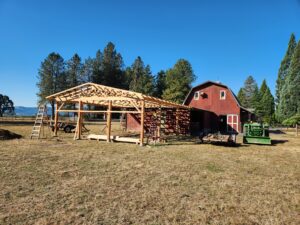
We soon realized the barn was not big enough to hold our ever accumulating tools and farm equipment. So Peter set out to build an extension. The project took the better part of a summer with all of the trusses and foundation work being done by hand.
